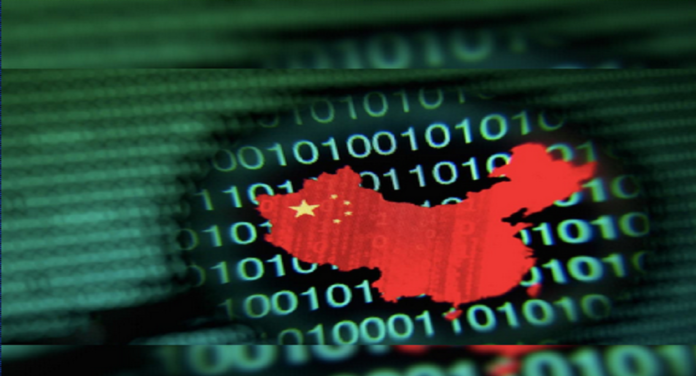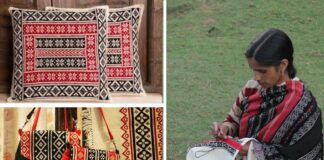China’s rapid growth in last couple of decades since Deng Xiaoping started economic reforms in 1978 followed by the restructuring of its economy by Premier Zhu Rongji in 2001 when China joined WTO; helped generate a disproportionate amount of wealth for the Chinese State. China has now emerged as the second-largest economy of the world behind the US with four of the top ten most competitive financial centers and three out of the ten world’s largest stock exchanges.It has become home to the largest companies in the Fortune Global 500 where 124 of them have headquarters in China.
By Abhishek Das
Most important facet of the Chinese economy is its desire to invest, lend the wealth it generates from the trade or to say “surplus trade”. Except the oil-exporting Middle-Eastern Countries; trade surplus is in China’s favour with all of its trade partners.
Its gigantic engagement throughout the globe with countries spanning all five continents is unparalleled in nature which helps China grow in power and prestige. In this brief paper; we shall analyze China’s massive investment globally and how such strength of its economy can be manipulated to create deterrence for Indian State in future conflict with China.
Dragon’s Lust
Under the pretext of “Peaceful Rise”; China fuelled its ambition to reach the global stage; more so under its current paramount Xi Jinping. The Belt and Road Initiative (BRI) as envisaged by Xi Jinping is nothing but agigantic cobweb of roads, railways and ports to connect China with Europe and Africa through Asia. This entire package is considered to be used with all things Chinese; manpower, raw material, technology and above all; the money.
Indian strategist Brahma Chellaney was first to identify this Infrastructural Development Programme as nothing but an attempt by the Chinese state to subvert and coerce the infrastructure developmental requirement of the poor countries which he named as “Debt Trap Diplomacy”. BRI is, therefore, deemed as an imperial outreach of Xi Jinping to attempt for the position of the superpower where China wishes to reach with superior economy and strength.
The mammoth quantum of the investment made by Chinese State-controlled institutions can be gazed at by using the “The China Global Investment Tracker”6 published by the American Enterprise Institute and The Heritage Foundation in 2020 amounting to “$ 2095.49 Billion” measured since 2005 compared to almost “Zero” couple of decades back. The Dataset as measured below is from the database of “The China Global Investment Tracker” is an attempt to identify the major areas such as Energy, Mining, Transport and Real Estate where the Chinese money got mostly invested or loaned to countries as far as BRI projects are concerned as well as overall Chinese investments are concerned altogether including the BRI investments.
While China’s dominance in world trade is well articulated but its role in global finance is neither documented nor studied mainly due to lack of credible data. However, this path-breaking attempt to identify the journey of China’s wealth was made in 2019 by Sebastian Horn, Carmen Reinhart and Christoph Trebesch through their paper published by Kiel Institute for World Economy under the heading of “China’s Overseas Lending”.
The most intriguing part of the study is that all of China’s investments and loans are controlled by Beijing. Therefore, there is no proper oversight on China’s investments or lending by IMF or other independent bodies like Bank for International Settlements (BIS) or World Bank or Paris Club or OECD. Thus it implies that the flow of money is controlled by Beijing and the best we could know about it is sketchy in nature and vague in details. Moreover, as there is no oversight; thus any investment and loan therefore could very well be made to order in nature either for the recipient or from the donor to satisfy and achieve dubious purposes at the same time. Therefore, such investment or loan is, either way, is a method of exploitation by the creditor towards the debtor.
The Method of Debt Trap and Encapsulation of Wealth
Historically, China has always been a good lender since the inception of the Communist Regime in Beijing and has always been keen to use its investments or loans whatsoever to achieve its policy objectives. In the last couple of decades; any and every Chinese loan has been marked with its policy objective. According to Andrew Scobell from Rand Corporation such phenomenon is known as “Hawai Liyi” or “Overseas Interests”. It started with an intention to support brotherly communist regimes in the 1950s which was aimed to gain moral high ground over the Soviet Union even when its own economy was in a shabby state of affairs. Such effort gave China a certain degree of competency in the field of investing money or giving loans suitably to further its own political agenda.
With time; China’s desire to invest or to lend has also evolved in tandem with its growing geopolitical interests coupled with greed for more territory and assets. Flooded with unrestricted Chinese money that might have fuelled the growth in infrastructure, mining, power sectors among the poor and developing countries but the debt of these countries to China steadily rising which is more than 40 percent of total external debt for the 50 Low-Income Developing Countries (LIDC) being the main recipients of Chinese direct lending. The average stock of debt owed to China has also increased for these LID Countries from less than one percent of GDP in 2005 to more than 15 percent of the debtor country’s GDP in 2017.
Obviously, these countries are the most vulnerable to such a huge inflow of money due to the unavailability of the infrastructure and competence it requires to control such money. Therefore corruption, misappropriation, and embezzlement of funds are normal phenomena. Opacity, high-interest rates, and made to order approach by China in lending money lead to widespread corruption resulting in default in repaying the loan. Thereby, the Debt Trap sets in.
However, to protect such a huge amount of wealth that too in such a high-risk market, Chinese thinkers have also developed their own ways of asset protection.
China has strategized the circulation of the money it is willing to invest or to loan through its own system which will both serve the purpose of lending as well as the purpose of the security which reduces the risk of default on its loans which is identified as Circular Lending. China instead of giving loans to the recipient Governments often disbursed the loans directly to the Chinese contractors involved in that recipient country. China Pakistan Economic Corridor (CPEC) is one such example where mostly Chinese companies are involved in various projects and any other company which wants to join the CPEC project finds its way through Chinese companies only. This approach helps China in three ways.
Firstly, the money remains in the Chinese financial system; thus it ensures the security of the investment.
Secondly, such a circular money lending system ensures the amount of secrecy from disclosing the loans as well as the purpose of the loans which suits Beijing perfectly to advance its policy objectives unhindered.
Thirdly, the money has further been secured with the mortgage methodology where China secures its loan with an equivalent amount of asset from the debtor country so that in the event of default in loan repayment; it can take control of the asset that’s been mortgaged to China.
Montenegro is one such example where China has given a loan of €800 million to build a highway and provisioned to get the right to access Montenegrin land as collateral if Montenegro fails to repay the debt. Such agreement made by a state only shows its medieval nature of seizing the assets of the debtors. Hambantota in Sri Lanka, Mombasa in Kenya, and Piraeus in Greece are few examples of Chinese “Debt Trap” policy.
Dragon’s Soft Underbelly and India’s Cross-Domain Deterrence
Green Belt and Road Initiative Centre observed a whopping reduction of 54 percent in Chinese investment in 2020 compared to 2019 for BRI Projects.11 Director-General of the Chinese Foreign Ministry’s International Economic Affairs Department, Wang Xiaolong said 20 Percent of the BRI Projects were seriously affected while other 30 to 40 percent faced with adverse impact.12China’s economy shrunk during the pandemic, and lending under the BRI has come down from $ 75 Billion in 2016 to just $ 3 Billion in 2020.13Even the Flagship Project of BRI, the CPEC is also not in good shape where only 32 of the total 122 Projects announced under it, could be completed so far. Global Law Firm “Norton Rose Fulbright” has already predicted the death knell for some BRI Projects.
Although the Chinese economy is returning back into good shape in 2021 the figures as represented highlight the vulnerability of the Chinese economy when it is impacted by a trade war with the US, COVID-19 Pandemic, shrinking of global businesses, and damaged goodwill.
In today’s hybrid battle-space, any and every opportunity against one’s adversary must be exploited to dominate both the narrative and the battle-space. As far as India is concerned; China’s attitude towards it can best be called unfriendly as far as supporting Pakistan is concerned or grabbing Indian land latest in Eastern Ladakh is concerned which resulted in the death of troops from both sides.
Since China has an edge over India both economically and militarily, therefore, use of non-kinetic alternatives within the Hybrid Battlespace ought to be assessed against Chinese brute power outside the military domain. Since China’s export of wealth is subject to mostly poor and developing countries India could exploit the options it has under existing frameworks with all the recipient countries by reducing the trade, restructuring the aid, and curtailing the investment to express the dissatisfaction towards the recipient countries on accepting Chinese loan and investment. However certain options furthermore are available within the Hybrid Battlespace to engage with China to exploit their vulnerabilities within those recipient countries.
This article first appeared in www.vifindia.org and it belongs to them.












